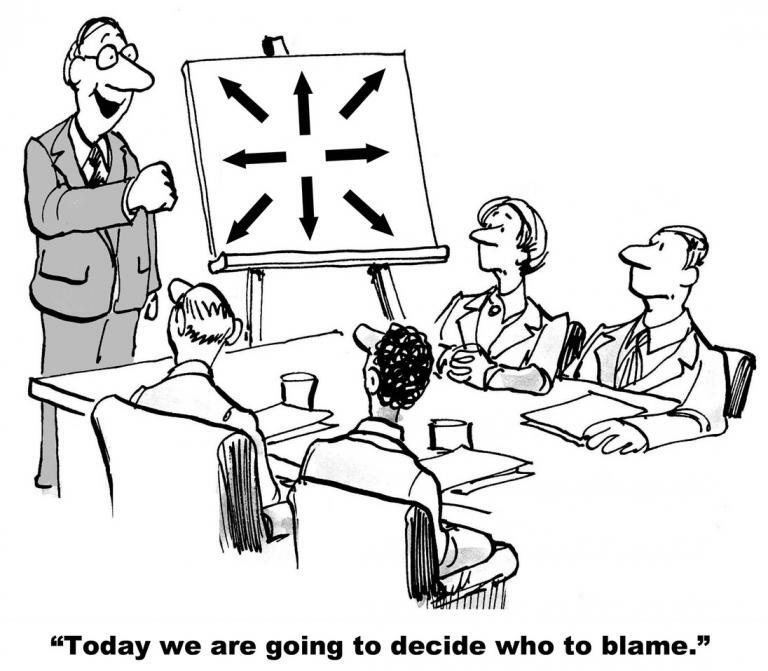Sit down, grab a cup of coffee, and relax. It’s time to talk about everybody’s favorite subject: magnets (how do they work?). For years, companies have pumped out content, stuck it behind a form (gate), and collected those sweet, precious leads in exchange for a skinny-dip into their amazing, custom-crafted eBook/white paper/. In fact, this practice has been going on for so long, that it’s hard to imagine an internet without gated content; a place where downloading white papers and eBooks didn’t require some form of email, name, or phone number.
Gating (i.e., sticking content behind a form) has spread like a virus. If you want to go and download that awesome new niche industry research from Gartner, McKinsey, Forrester, or Bain, you’ll almost certainly need to drop your email into a box. Let’s be honest: you’ve probably put your business email into 300 boxes by now, and you probably have to dump your spam folder 10x a week as a result. If these multi-billion dollar B2B research Goliath are using gated content, then it surely works, right?
Or does it?
As we embrace a new, fast-paced, customer-centric B2B ecosystem, it’s time to take a hard look at gated content. Is it really boosting revenues? Are the leads worth it? Does gated content work for everyone? And, most importantly, how does gated content impact your overall value, customers, and brand?
To Gate Content or Not to Gate: That is the Question
You pour your heart, soul, and brainpower into every piece of content. The hours of research, sentence-crafting, and minute adjustments to make your content hyper-digestible enough to spark a sharing frenzy is an energy-sapping affair. So, it’s only natural to want an immediate return on your investment. Gating your content behind a form on a beautiful landing page is a tempting way to grab that immediate return in the form of an oh-so-juicy email.
Unlike B2C leads, where emails rain from the sky and seep out every nook-and-cranny, B2B brands crave detailed information about key decision-makers. If someone downloads your “how to pick the right plasma processing solution for large-scale Micro-Electro-Mechanical Systems projects” eBook, there’s a 99.9% chance that person is a lead. And leads aren’t exactly everywhere in niche B2B industries. Thus, gating your content is tempting. You get an email immediately.
But there’s a problem.
The average conversion rate for landing pages is a meager 2.35%. And gating your content will inevitably turn some of your visitors away. Gating trades reach for quick, upfront conversions. It’s like a loan. You pay interest.
So, you’re at a crossroads. Do you put an email gate on your content for an easy upfront lead at the cost of viewership? Or do you let nature take its course and hope that the content is valuable enough to generate downstream leads? It’s tricky! The long-term marketing game is filled with nuance, vague metrics, and complicated decisions. Trying to execute those long-winded brand-building schemes that involve a convergence of marketing and sales strategies is well outside the wheelhouse of many companies — especially in the small and mid-market.
To help, let’s dissect gating and how it impacts conversions. Then, we’ll dive into some scenarios where gating makes perfect sense and some scenarios where gating is probably doing you more harm than good.
The Downsides of Gated Content
Let’s start with a simple question: do you like gated content? Don’t lie. Filling out forms to get a webinar, eBook, or white paper is a little annoying. It just is. The internet is jam-packed with content wedged behind form fills. Worse yet, a good chunk of that content is, well… garbage. It’s not good. So, you download this poor, unfulfilling content only to get hammered with a billion-and-a-half sales emails. No one likes this.
Thus, we get to the crux of the issue. Gated content has some serious cons. In fact, let’s touch on a few of the biggies.
Con #1: The Fake Emails
Gated content generates fake emails. If you’ve run gated campaigns, you’ll definitely know what we’re talking about here. How many of your emails look something like this:
- abasdfdsafasdf@gmail.com
- givemeyourwhitepaper@biteme.com
- Im@socool.com
- Gatedcontent@sucks.com
Yeah… those are emails from people who hate gated content. They’ve been burned too many times, and they’re tired of sifting through a landmine of sales pitches to find that critical email they need for their jobs. These emails represent a tangible threat to your productivity. Not only do you have to manually go in and identify these spam emails, but you might slip some into your campaign strategy, which equals wasted dollars and effort on trying to reach someone who simply doesn’t exist.
Con #2: Not a Great Start to the Customer Experience
Recent surveys suggest that companies are more focused on the customer experience than price or product. It makes sense. Walker predicted that brand would overtake price and product by 2020 back in 2015, so this matches up. There’s plenty of research to back up customer experience-driven businesses. Eighty-three percent of companies that focus on “making customers happy” experience higher revenue as a result, and businesses that nail the customer experience drive ~8% higher revenue than their peers. So, there’s tangible value in the customer experience. And, we would venture to guess that customer-centricity is a core pillar of your business.
So… how does that fit in with gated content? Time for a dose of truth serum. It doesn’t. I can’t imagine that anyone loves gated forms. They may tolerate them. But they certainly don’t love spending an extra 3 minutes to get the content they came for. And they’re definitely not going to be happy if that content isn’t up-to-snuff. In a way, gating content applies extra pressure. If that content isn’t downright amazing, you risk a poor experience. Honestly, this is probably why Gartner and McKinsey (who has recently started a mass ungating) get away with this. They have thousands of professional employees creating industry-leading content backed by multi-billion-dollar pocketbooks. You probably can’t match that flex.
Gated content and customer experience are at odds. It’s that simple.
Con #3: Gated Content Can Have a Negative Impact on Marketing & Sales Relationships
The main reason companies gate content is to gain immediate leads. Chances are, they need those leads to prove the “value” of their marketing efforts. In other words, gating helps “prove” the effectiveness of content to C-level. But measuring the value of marketing based on lead gen reinforces negative marketing notions and prevents solidified sales and marketing relationships.
Marketing should be responsible for hitting revenue goals, not generating leads. If you put all the pressure on leads, you’re missing the real value of your marketing campaigns. Let’s look at two examples:
Example 1: Your marketing team spends a few weeks creating an amazing whitepaper. It’s downright beautiful. It’s stats-laden, filled with wonderful infographics, and thought-provoking and original. They shove that whitepaper behind a form fill. Over the next few months, you get 50 high-quality leads from that content. Sweet! The conversions from those leads bumped revenue by 2% that quarter.
Example 2: Your marketing team spends a few weeks creating that amazing, infographic-filled whitepaper. They put it out for free, no form fill required. You get zero form fill leads. But, instead of 500 people downloading the whitepaper, 5,000 people download it. These are all the people who didn’t want to fill out your form. Over the course of the next few months, your revenue jumps 10%. A few hundred people who read that whitepaper ended up watching webinars, researching your product on review websites, and finally converting. Sure. They’re not easy to measure. But your bottom-line revenue is 8% higher than if you gated your content.
Example 2 is obviously better for your company. But you can’t take advantage of Example 2 until you shed that traditional marketing shell. Your marketing efforts are about far more than generating leads. You want revenue. Unfortunately, it’s not always easy to measure downstream revenue from consistent and meaningful marketing campaigns. There are many invisible touchpoints and micro-moments that shape customers’ opinions. If you only focus on the immediate value, you miss out on the real, sustainable value that’s hidden-from-sight.
Gated content and customer experience are at odds. It’s that simple.
Con #4: Gating Content Can Undermine Your Ability to Educate and Influence Your Target Buyer
Most new software tools If you’re offering software or services that are a new approach to a problem, or you’re actively trying to educate your target buyer.relativelyin an industry. Unfortunately, it’s not always easy to measure downstream revenue from consistent and meaningful marketing campaigns. There are many invisible touchpoints and micro-moments that shape customers’ opinions. If you only focus on the immediate value, you miss out on the real, sustainable value that’s hidden-from-sight.
When Does Gated Content Make Sense?
So, gating content obviously impacts customers, reinforces poor marketing practices, and creates havoc for sales teams. Why would you ever gate? Great question! Like most things in marketing, the answer is simple. When it makes sense. Are you a trusted brand with a solid reputation? Feel free to gate that content if it’s really what you want to do. Are you putting out the single best source of content on the entire internet? You can probably get away with gating. Do you desperately need to prove marketing value a few months before a Series A? Yeah. Gate that content.
But in most situations, gating can do more harm than good. Not only does it suffer from all the problems listed above, but it requires a robust nurturing pipeline and a careful eye towards data privacy laws (which are getting bananas). In other words, there are companies that get away with gating. But we would love to see a side-by-side to see if long-term gating is actually helping their growth. Because we doubt it.
A Potential Alternative to Gated Content
Do you really need those upfront leads? Here’s an alternative. Gate part of your content. Give customers the first half (e.g., whitepaper, eBook, etc.) and gate the second half (e.g., follow-up webinar, demo, etc.). That way, you know the customers filling out the form are top-tier leads, less likely to use fake emails, and not turned away by the initial form fill.
Drift recently killed their form fills using this method. They use form fills for newsletters (you pretty much have to) and demos. That’s it! And they’ve seen some impressive results. Remember, you may not have the metric and benchmarking arm of a company like Drift. So ungating can be terrifying. You should always look towards your marketing team to help you prove value without solely relying on leads. That’s a superficial metric. And it’s doing you more harm than good.
Need Some Help with Your Content Marketing Strategy?
At Brand Syntax, we believe in long-term, brand-centric marketing practices that generate tangible value and growth. Are you tired of focusing on baseline metrics like lead gen to determine your marketing value? Don’t get us wrong. Leads are important. But they’re only a small part of your marketing playbook. We can help you grow a sustainable brand that convinces, converts, and impresses without forcing you to rely on quick metric boosts. Contact us to learn more.







